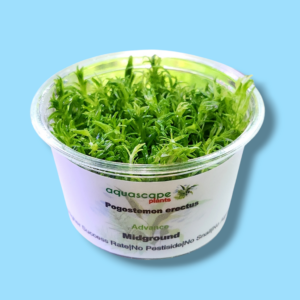Aquascapeplants Anubias barteri var. nana ‘Petite’
- Small-leaved epiphyte
- Very popular for aquascaping
- Robust, hard leaves
- Suitable for nano tanks
| Complete botanical name | Anúbias bárteri var. nána (Engler) Crusio |
| Family | Araceae |
| Genus | Anubias |
| Difficulty | very easy |
| Colour | light green, medium green, dark green |
| Texture | kleinblättrig |
| Usage | Epiphyte (growing on hardscape), Cichlid proof plant, Midground, Nano tanks, Foreground, group |
| Height | 3 – 6cm |
| Width | 5 – 20cm |
| Growth | slow |
| pH value | 5 – 8 |
د.إ31.50 د.إ35.00
The Petite Anubias is often regarded as identical with Anubias barteri var. nana ‘Bonsai’. However, under the same growth conditions, its leaves get a little larger while the ‘Bonsai’ is indistinguishable from ‘Mini Mini’. The “Petite-Nana” has considerably smaller leaves than standard A. barteri var. nana, however, it is as robust and easy to care for. It grows under very low light as well as under strong lighting. It doesn’t need the addition of CO2, however, it can be beneficial for growth nonetheless. The dwarf Anubias forms ‘Petite’ and ‘Bonsai’ are popular in aquascaping and are among the most beautiful epiphytic plants for decorating the hardscape (driftwood, rocks). They can also be grown rooting in the ground as long as the rhizome is not covered.
The smallest Anubias variety in the trade can be found under two names: Anubias barteri var. nana ‘Petite’ and ‘Bonsai’. Its origins are very much in the dark: according to information given by Dennerle around the year 1997, the plant originates from Cameroun, according to the Tropica plant catalogue, this variety is based on a mutation that occured in the plant nursery “Oriental Aquaria” in Singapore (Kasselmann 2010). Whereas it is almost identical to Anubias barteri var. nana, its small size and slower growth is often given as a reason for higher prices.
Contrary to the opinion of some dealers the leaf blade of ‘Petite’ respectively ‘Bonsai’ may grow larger than 1 cm. However, it stays smaller than its ancestral form, Anubias barteri var. nana, anyway. Like the latter, ‘Petite’ is very hardy and has been called “growing plastic plant”







